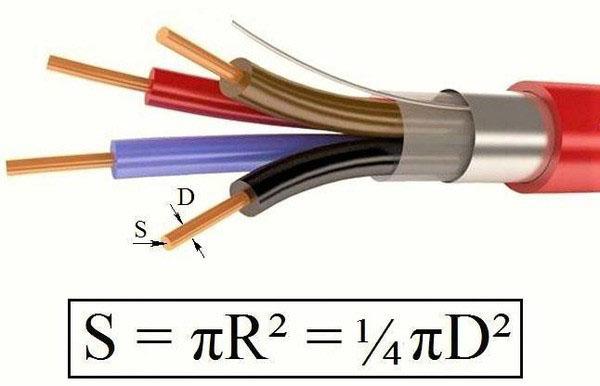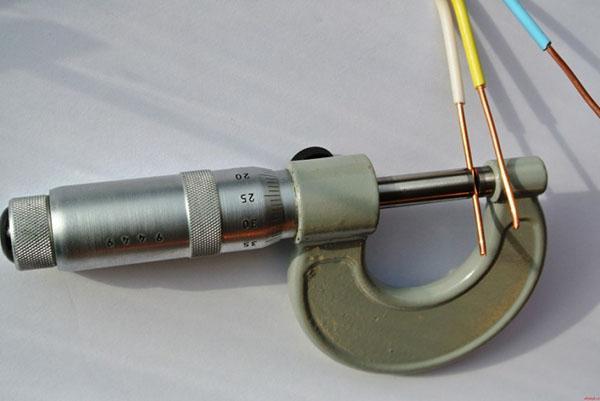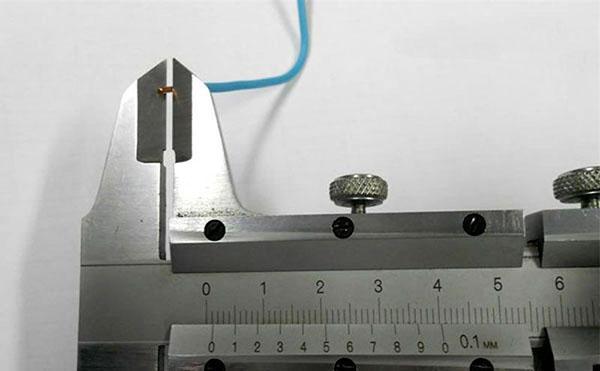How to choose the right wire size
 The design of living quarters must necessarily include the calculation of conductive elements, such as wires, to provide the house with electricity. You can choose the required wire cross-section based on several parameters: power, conductivity and diameter.
The design of living quarters must necessarily include the calculation of conductive elements, such as wires, to provide the house with electricity. You can choose the required wire cross-section based on several parameters: power, conductivity and diameter.
The correct calculation of the cable cross-section will allow you to avoid the most unpleasant consequences in the future, such as overheating and fires. However, it should be understood that such situations are not always caused by a calculator's oversight. Unscrupulous cable suppliers may provide the buyer with wires of a smaller diameter than indicated in the documentation. Therefore, the skill of measuring the diameter is one of the most important when choosing a cable.
Determine the size of the cable section
Cables can be either single-core or multi-core. In the second case, it is best to determine the diameter of each individual core. Also, the core can be single-wire or consist of many wires. Regardless of the type of cable, you can determine its cross section by diameter.
All wires on the market must contain general information on the type of cable. It is usually indicated on the outer winding of the cable to make it easier for the customer to make a choice.
However, do not forget that "it is also written on the fence" and it is best when choosing a wire to independently take all the necessary measurements. Fortunately, their implementation is not so difficult. Determining the actual wire diameter is possible using the available tools. These tools include a micrometer and a vernier caliper.
Micrometer measurement

Measuring with a caliper
 You can also measure the cable diameter using a common tool such as a vernier caliper. To do this, it is necessary to clamp the measured wire between the jaws of the meter and read the exact value from a special scale.
You can also measure the cable diameter using a common tool such as a vernier caliper. To do this, it is necessary to clamp the measured wire between the jaws of the meter and read the exact value from a special scale.
Measuring with a ruler
 The least accurate type of measurement is simple ruler measurement. However, in this case, accuracy can be achieved by measuring a large number of turns. Measurement procedure with a ruler:
The least accurate type of measurement is simple ruler measurement. However, in this case, accuracy can be achieved by measuring a large number of turns. Measurement procedure with a ruler:
- A conductor is wound on a certain rod for a certain distance.
- The ruler measures the length of the wrapped section of the rod.
- The resulting value is divided by the number of turns.
This method still has a certain accuracy due to the reduction of the error.
Next, you can determine the cross-section of the cable by diameter. This can be done using the formula:
S = π * D2/4
where D is the measured wire diameter.
The skill of self-calculating the cross-section of the conductor will help to avoid all sorts of problems in the future, as well as deception by the product supplier.
Only by understanding how to determine the cable cross-section on your own you can protect yourself and your projects from dangerous surprises.
Tables and norms
Another very common method to determine the cross-section of a wire by diameter is the use of standardized tables, which list all the most common and widely used cable cross-sections.
Using a table can eliminate the need for special calculations and measurements, which are wasting precious time.
The procedure for selecting the wire cross-section according to the table:
- First you need to decide on the type of cable.
- Next, we find the diameter we need in the table.
- Determine the corresponding section.
- If necessary, we independently check the indicators using the methods described above and make a decision on the purchase.
Wire cross-section table by diameter.
| Wire core diameter, mm | Core section, mm2 |
| 1,12 | 1 |
| 1,38 | 1,5 |
| 1,59 | 2,0 |
| 1,78 | 2,5 |
| 2,26 | 4,0 |
| 2,76 | 6,0 |
| 3,57 | 10,0 |
| 4,51 | 16,0 |
| 5,64 | 25,0 |
| 6,68 | 35,0 |
The table linking wire cross-section and diameter shows that the formula described above is very fair. The values of the cross-sections given in the proposed table are calculated exactly according to it with certain allowable roundings.
So, it is already known how to independently find out the cross-section of the wire. It remains only to use the knowledge gained with benefit.
When buying a cable, you can ask the seller to strip a small section of the wire in order to carry out all the necessary manipulations to measure the product. However, practice shows that not many sellers take this step. Then the only way out is to buy at first a small section of the cable needed for measurements. But after all doubts have disappeared, you can purchase as many wires as you need. Still, not the most joyful fact is that truly attentive buyers often choose a cable with a larger cross section. Indeed, in practice, they turn out to be somewhat smaller than the formal size.
Calculation of stranded conductors
 The calculation of the wire cross-section in terms of diameter for a stranded conductor is carried out similarly to a single-core one, however, the correction for the number of cores must be taken into account. The resulting value is multiplied by this amount, and the wire is selected by this new value. The most difficult problem in such calculations is measuring the diameter of a thin core. Indeed, often in such conductors they have very small cross-sections and their measurement is difficult. If, nevertheless, it was possible to measure, then the next main criterion for selecting a cable is the conductive capacity of the wire. The conductivity of one core is selected as a starting point, and only then, according to the corresponding dependencies, they arrive at the final value. For the total conductivity, the cross section is already selected using the appropriate tables and norms.
The calculation of the wire cross-section in terms of diameter for a stranded conductor is carried out similarly to a single-core one, however, the correction for the number of cores must be taken into account. The resulting value is multiplied by this amount, and the wire is selected by this new value. The most difficult problem in such calculations is measuring the diameter of a thin core. Indeed, often in such conductors they have very small cross-sections and their measurement is difficult. If, nevertheless, it was possible to measure, then the next main criterion for selecting a cable is the conductive capacity of the wire. The conductivity of one core is selected as a starting point, and only then, according to the corresponding dependencies, they arrive at the final value. For the total conductivity, the cross section is already selected using the appropriate tables and norms.
Thus, the cable cross-section can be selected based on its planned dimensions and conductivity. And despite the fact that not much attention is paid to the second point in this article, it is necessary to understand that it is he who is fundamental in the selection of the cable. The so-called burst current is the line beyond which the electrical system can not only fail, but also provoke the most extensive all-destructive fires.